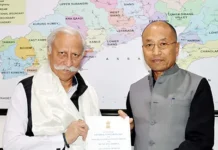[ SBC Singh ]
Every year, the 10th of April is observed as World Homoeopathy Day to mark the importance of homoeopathy and its contribution to the world of medicine. This day is observed all over the world to remember the life and legacy of Dr Samuel Christian Friedrich Hahnemann, the Father of Homoeopathy. This year is the 266th anniversary of Dr Samuel Christian Friedrich Hahnemann. Today, people continue to believe in the curative power of homoeopathic therapy in many places like India, where homoeopathy is widely practiced. There are more than 2.8 lakhs registered homoeopathy practitioners in India. It is true that many people prefer homoeopathy over other systems of medicines day by day for many conditions, especially chronic diseases and other ailments which are hard to cure by other systems of medicine. Today homoeopathy remains the most widely accepted type of therapeutic system. It is a highly developed health practice that uses a systematic approach to the totality of person’s health. Any person seeking a fuller understanding of holistic health and healing will find homoeopathy treatment extremely useful.
The histories of many men who have risen to eminence in some particular branch of science teach us that they have done so under the most unfavourable circumstances and in spite of the greatest obstacles. Samuel Hahnemann belonged to this class of great men.
Dr Samuel Christian Friedrich Hahnemann
Christian Friedrich Samuel Hahnemann was born in Meissen, Saxony, near Dresden. His father, Christian Gottfried Hahnemann, was a painter and designer of porcelain, for which the town of Meissen is famous.
As a young man, Hahnemann became proficient in a number of languages, including English, French, Italian, Greek and Latin. He eventually made a living as a translator and teacher of languages, gaining further proficiency in Arabic, Syriac, Chaldaic and Hebrew.
Hahnemann studied medicine for two years at Leipzig. Citing Leipzig’s lack of clinical facilities, he moved to Vienna, where he studied for ten months. After one term of further study, he graduated MD at the University of Erlangen on 10 August, 1779, qualifying with honours.
Samuel Hahnemann established the fundamental principles of the science and art of homoeopathy. He is called the Father of Experimental Pharmacology because he was the first physician to prepare medicines in a specialised way, proving them on healthy human beings, to determine how the medicines acted to cure diseases.
Before Hahnemann, medicines were given on speculative indications, mainly on the basis of authority without experimental verification. Dr Hahnemann espoused the law of cure known as ‘similia similibus curentur’, or “like cures like’. This means that a remedy that produces symptoms in a healthy person will cure those same symptoms when manifested by a person in a diseased state. This law of cure has been verified by millions of homoeopaths all over the world since the time of Hahnemann.
Dr Hahnemann described the different aspects of ‘acute’ and ‘chronic’ diseases. Acute diseases are transitory; they have a beginning and an end, whereas the chronic diseases are coexistent with life. Either they are present in a manifest or a latent state. From this work came the chronic miasms of psora, syphilis, and sycosis.
Dr Hahnemann treated thousands of difficult and chronic cases that defied the best care from allopaths all over Europe. Thus, he became so famous that physicians from Europe and America came to him for coaching in the new science and art of healing, called homoeopathy.
Discovery of homeopathy
In the 18th century, there were many theories and hypothesis regarding the nature of disease and causes of disease. Due to many theories and hypotheses, there were numerous methods of treatment without fixed principles.
After giving up his practice around 1784, Hahnemann made his living chiefly as a writer and translator, while resolving also to investigate the causes of medicine’s alleged errors. While translating William Cullen’s ‘A Treatise on the Materia Medica’, Hahnemann encountered the claim that cinchona, the bark of a Peruvian tree, was effective in treating malaria because of its astringency. Hahnemann believed that other astringent substances are not effective against malaria and began to research cinchona’s effect on the human body by self-application. Noting that the drug induced malaria-like symptoms in himself, he concluded that it would do so in any healthy individual. This led him to postulate a healing principle: “That which can produce a set of symptoms in a healthy individual, can treat a sick individual who is manifesting a similar set of symptoms.” This principle, like cures like, became the basis for an approach to medicine which he gave the name homoeopathy.
In the year 1796, ‘An Essay on New Principle for Ascertaining the Curative Powers of Drugs and Some Examination of the Previous Principles” was published in Hufeland’s Journal (Volume 2). Dr Hahnemann also put forward his new doctrine of similia similibus and curantur. So the birth of homoeopathy took place in the year 1796.
Dr Hahnemann published ‘Medicine of Experience’ in 1805. He first used the term homeopathy in his essay ‘Indications of the Homeopathic Employment of Medicines in Ordinary Practice’, published in Hufeland’s Journal in 1807. And in 1810 the first edition of ‘Organon of Medicine’ was published. ‘Organon of Medicine’ is the foundation on which the philosophy and principles for practice of homoeopathy remains. Through this, Hahnemann conveys that the physicians’ high and only mission is to restore the sick to health, what he termed as to cure. (Dr SBC Singh is SMO, HWC, Hollongi. This daily takes no editorial responsibility for the article.)


